| Includes Issues: | Legends of the Dark Knight 39-40, 50, 52-54 | |
| Original Publication Dates: | November 1992 - November 1993 | |
| TPB Publisher: | DC Comics | |
| TPB Publication Dates: | June 1996 | |
| ISBN-10: | 1563892669 | |
| ISBN-13: | 978-1563892660 | |
| Pages: | 174 | [More Info] |
For most books, this information is collected from the book itself and double checked against several other resources. If this particular book hasn't yet been released, the information probably comes from the publisher's press releases and
Amazon.com.
Sometimes a book is listed here based upon a past solicitation, but never actually comes out. I like to keep these in the database, but I try to make a note of the situation.
I try to list the earliest publication date. For books with a hardcover and softcover or multiple editions this will be for whichever came first. Same for the ISBN numbers.
If there have been similar releases that have significant differences, eventually both will be listed. This means that Showcase and Archives that collect similar material are listed as separate books. Likewise, Omnibus, Deluxe, or Absolute editions will have a separate page, though they will probably be close in the timeline.
If you think
any of the information on this page is off, feel free to leave a comment with a suggestion! You may also leave links to relevant information, alternative publications, reviews, or anything you think would be helpful to site visitors.
| Lists: | Comics, DC Modern Age, DC Universe, Post-Crisis | |
| Series/Event: | | |
| Creators: | Alan Grant, Archie Goodwin, Arthur Ranson, Bill Kaplan, Bob Kahan, Bret Blevins, Bryan Talbot, Dennis 'Denny' O'Neil, Gaspar Saladino, Phil Winslade, Willie Schubert | |
| Characters: | Alfred Pennyworth, Batman, Commissioner Jim Gordon, Joker, Red Hood | |
| Edition: | | [More Info] |
Each book is tagged and sorted by the terms above. Every link in this section (in orange) can be used to generate a dynamic reading list based on the term.
The
Lists are large reading orders including every book that falls under them. For example, the
DC Universe list includes every book in that shared universe. This taxonomy is
hierarchical, which means that there can be sub-lists under the main lists. The DC Universe
Pre-Crisis list is an example, allowing you to narrow the selection of DC books. The distinction is important, because eventually there will be Silver Age book lists for Marvel
and DC, and the lists will
not be intermingled because of that hierarchy. Look to the list information in the sidebar to see all the lists currently active. Check the header of each listing for specific information about each one.
The
Series/Event taxonomy, like the rest, is not hierarchical. Not every book is part of a particular publication series, nor necessarily included in the reading order for an event. Events often include specific crossovers and tie-ins, but many event reading orders also include books purely because they are recommended for appreciation and understanding of that event.
The
Creators will be tagged in every book in the database. These include all the writers, artists, and editors that worked on the collected material, as well as anyone who significantly contributed to the collected edition.
The
Characters are very important to this database, since most users enjoy seeing a reading list generated by their favorite heroes and villains. Since each book is tagged with any reoccurring character inside, the amount of orders that can be generated through these tags is staggering.
Since there is so much information to be found in each book, it's relatively common for a couple tags to be missed. If you think this book needs attention - should be given any additional tags or moved off a particular list, for example - just leave me a comment and I'll get right back to you!
These links take you to the previous or next book in the database. It's worth a mention that, at this point, this is specifically
in the database.
That means that if you came to this book page via a specific character reading order, for example, the links may point to books that were
not listed on the previous page's reading order. This is because they are taking into account the entire database.
At this time, they go by the
Recommended Reading Order (or equivalents for non-DCU lists) for determining which books to link.
I am currently looking into getting them to give direction based on what page you came from, but it's possible that there is no solution to that issue.
| Unique Reading Order ID: | 200704240000 | |
| Chronological List Value: | 1993.11 | |
| TRO Database Book ID: | 24 |
[More Info] |
The
Unique Reading Order ID determines this book's placement in all lists generated from the
Recommended Reading Order (or equivalents for non-DCU lists). It's not actually unique site-wide, but is unique for each major list. This value is actually based on a date system, but has no relation to any real dates.
The
Chronological List Value is determined by the most recent publication date of collected contents. This value determines book placement on all lists generated chronologically.
The
TRO Database Book ID is a value indicative of when this book was added. It is used primarily for reference within the TRO database and not for sorting. It used to help with interpage linking, but has been replaced with a more user friendly "slug" (web url title) system.
These values are provided for the purposes of sorting your own collections. You could keep an excel spreadsheet or google document with the titles of the books in your collection. In columns next to the books, place each of these numbers. Then when you display the list sorted numerically by either of these columns, your books will fall into order.
Of course, now that TRO's
built in collection sorting feature is active, it's much easier to sort your books. But these numbers still display just in case you'd like to use them or are curious about the inner operation of the website.
Content from other blogs and on this site that links back to this post.
Registered users may edit their comments past the 5 minute limit. [
HTML is allowed, but posts containing more than two links or sketchy code will be held for moderation.








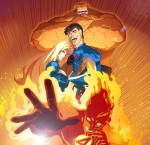

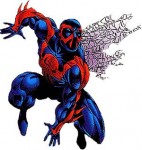


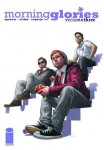

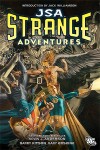
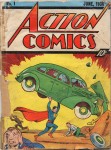



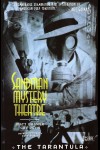


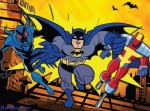
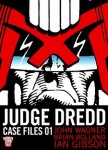
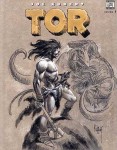
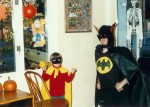


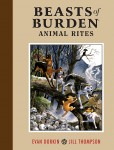
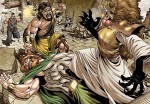



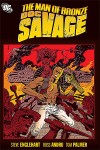

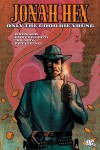

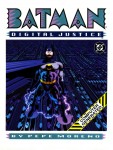


I don’t see truly connection beetwen LOTDK #39-40, LOTDK #50, LOTDK #52-53 and LOTDK #54. For me 4 different stories, so why are they in one “event”?
[Reply]
I think B and Simon below pretty much summed it up. It’s not that it’s an event, more of an odds and ends collection. I think they just put these all together in a book because they just though they should all be reprinting, with no more reason behind it than that.
I’ll get around to reviewing it at some point, and then I’ll try to get into more detail on the stories contained within.
[Reply]
I have this one, though I admit I haven’t read it yet. But I would say it’s one of those things where you can “blame the publisher” as has been said before.
I would nitpick your use of the word “event” though, as I see nothing that says this is an event, just a collection of stories.
[Reply]
I think it’s just a case of filling in the gaps left by previous collections, and picking the better stories from the gaps. That would be my guess but hard to say without looking through the publication dates for each collection.
For me the weirdest is for “Going Sane”: 65-68 & 200.
I know 200 involves The Joker, but it is a huge gap between issues.
[Reply]
Yeah, I think I had a similar issue with the Man Who Laughs trade.
Sometimes I feel like they just throw something in there to fill it out. It’s kind of nice, but I’d rather they keep things to contained storylines and just lower the price point. It would make my sorting life easier, haha.
[Reply]